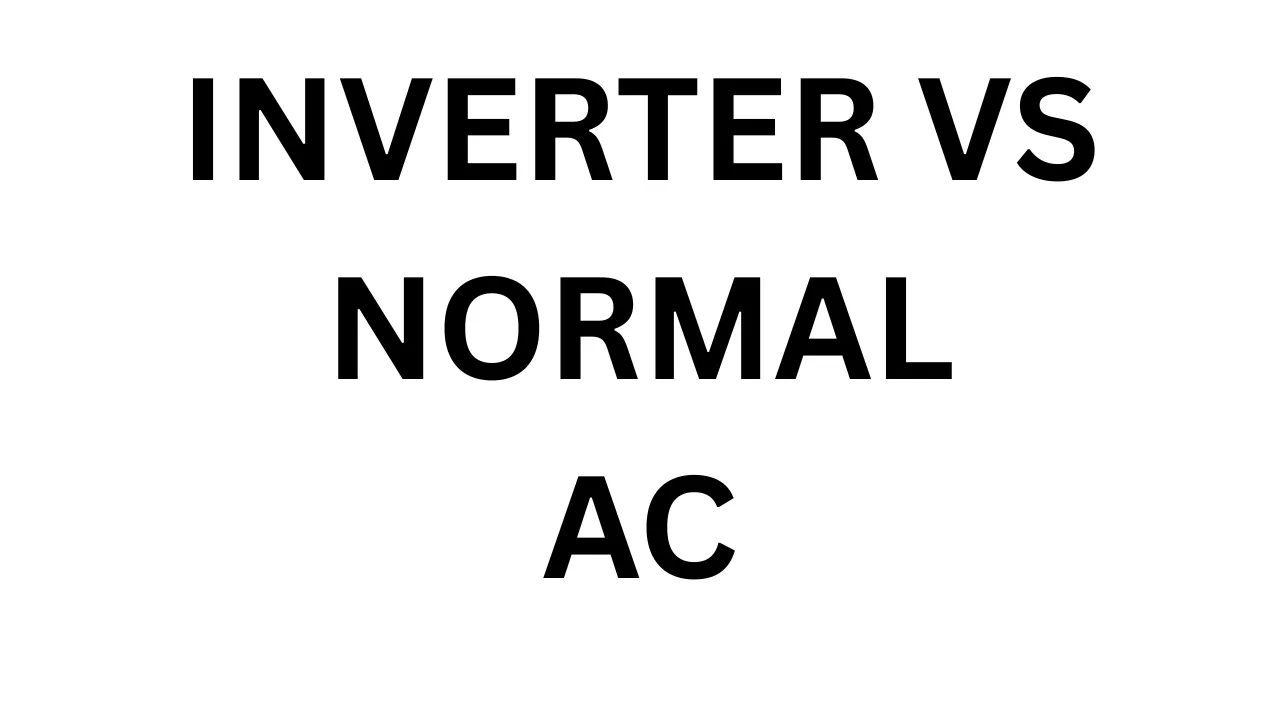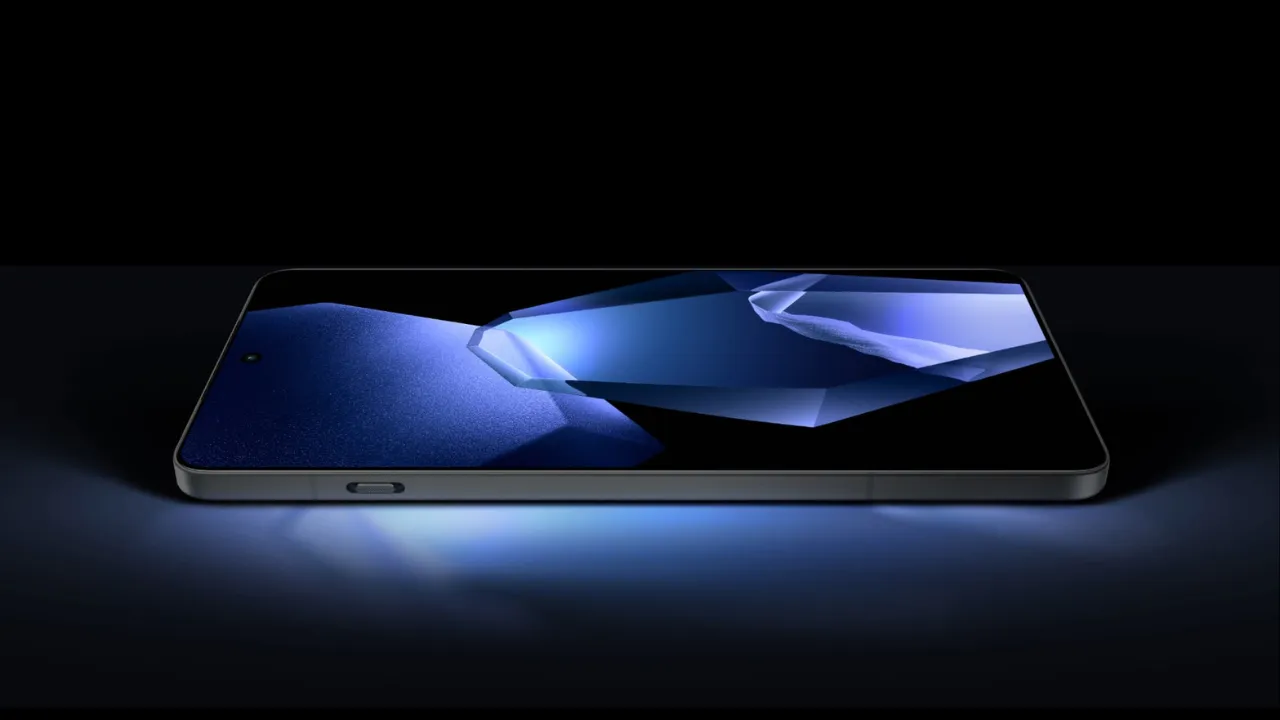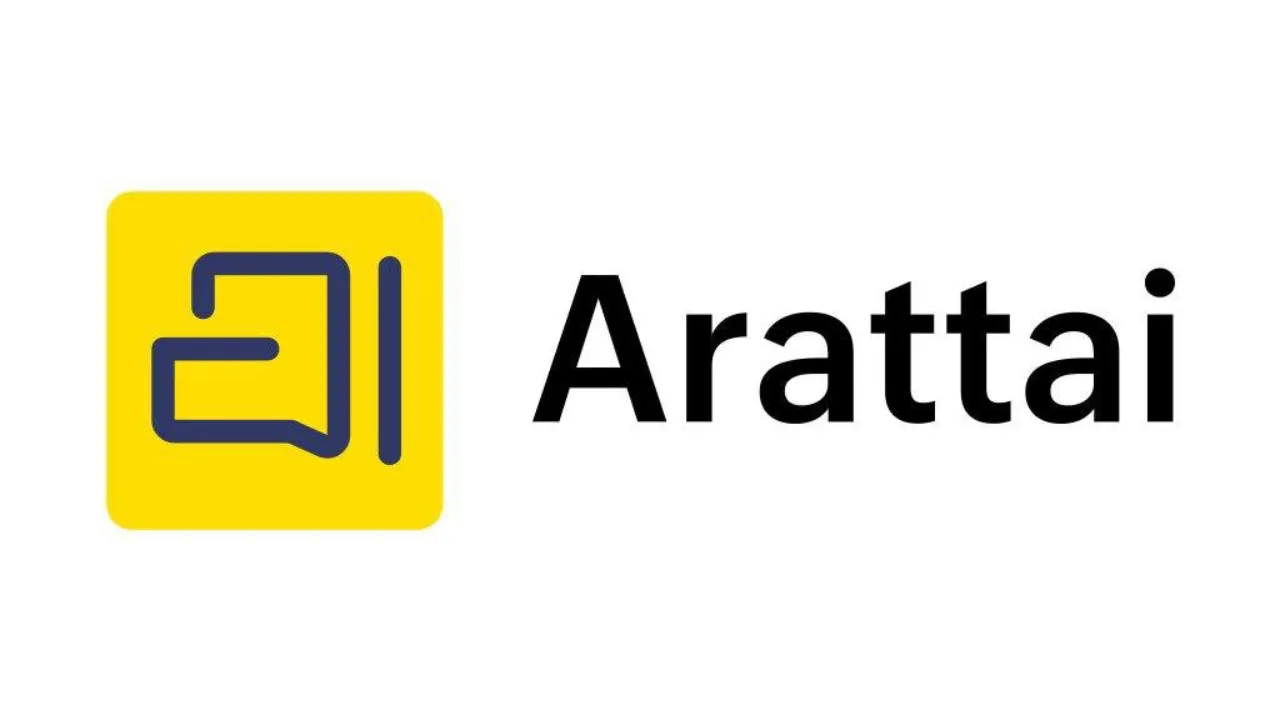Read this post in Hindi
Table of Contents:
- Introduction – Why This Comparison Matters in 2025
- What is a Normal AC? – Working & Features
- What is an Inverter AC? – Working & Technology
- Key Differences Between Inverter and Normal AC
- Power Consumption Comparison
- Cooling Performance & Comfort Level
- Price Difference – Which One is Budget-Friendly?
- Maintenance & Lifespan
- Best Use Cases – Who Should Buy What?
- Pros and Cons Summary Table
- Final Verdict – Which AC is Better in 2025?
- FAQs
Introduction – Why This Comparison Matters in 2025
Inverter AC vs Normal AC — this is one of the most searched comparisons every summer, and in 2025, it’s more important than ever. With rising temperatures, unpredictable weather patterns, and increasing electricity costs, choosing the right air conditioner is not just about comfort anymore — it’s about smart energy management.
Many buyers often get confused between inverter ACs and normal ACs. While both serve the same purpose — cooling your space — the difference lies in how they work, how much electricity they consume, and how much they cost in the long run. And in a year like 2025, where energy efficiency and long-term savings are top priorities, this decision can directly impact your monthly bills.
In this blog, we’ll break down the core differences, benefits, and drawbacks of inverter AC vs normal AC. Whether you’re upgrading your old system or buying your first AC, this guide will help you make an informed decision that suits your needs and budget. Let’s explore which one is truly the smarter choice in 2025.
What is a Normal AC? – Working & Features
A normal AC, also known as a non-inverter or fixed-speed air conditioner, is the traditional type of cooling system that many Indian households have been using for years. It works on a simple on/off mechanism. When the room temperature rises above the set limit, the compressor turns on at full speed. Once the desired temperature is reached, the compressor shuts off entirely.
This cycle of starting and stopping continues throughout the usage period. Because of this, normal ACs tend to consume more electricity, especially during long operating hours. The frequent on-off action also causes fluctuations in room temperature, which might feel slightly uncomfortable over time.
Despite this, normal air conditioners are often more affordable upfront and easier to repair or maintain. They are suitable for places where AC usage is limited to short durations, such as guest rooms or cooler regions.
Key features of a normal AC include fixed-speed compressors, basic temperature control, and usually a lower purchase price compared to inverter models. However, their long-term operational cost tends to be higher due to increased energy usage.
Understanding this basic functionality helps set the stage for comparing inverter AC vs normal AC in the sections ahead.
What is an Inverter AC? – Working & Technology
An inverter AC is a modern air conditioning system that uses advanced inverter technology to regulate the speed of the compressor motor. Unlike a normal AC that switches on and off repeatedly, an inverter AC adjusts its power output depending on the cooling requirement of the room.
Here’s how it works: When you turn on the inverter AC, the compressor starts at full speed to quickly reach the desired temperature. Once that temperature is achieved, it slows down but doesn’t turn off. Instead, it keeps running at a lower speed to maintain a consistent temperature without fluctuations. This not only improves comfort but also saves a significant amount of electricity.
One of the biggest advantages of inverter ACs is their energy efficiency. Since the compressor never completely shuts down, it avoids the power surge that usually occurs when restarting — leading to 30–50% less power consumption in most cases.
Inverter technology also results in quieter operation, faster cooling, and longer compressor life. Though inverter ACs are costlier upfront, their long-term savings on electricity bills make them a smart investment for regular users.
This smart technology gives inverter ACs a clear edge when comparing inverter AC vs normal AC.
Key Differences Between Inverter and Normal AC
Understanding the core differences between inverter AC and normal AC can help you decide which one suits your needs better. While both serve the same purpose — cooling your room — the way they operate, consume energy, and impact long-term costs is very different.
Here’s a side-by-side comparison of the most important factors:
| Feature | Inverter AC | Normal AC |
|---|---|---|
| Compressor Speed | Variable speed (adjusts as needed) | Fixed speed (on/off cycle) |
| Power Consumption | Low (energy-efficient) | High (consumes more electricity) |
| Cooling Performance | Consistent temperature, faster cooling | Fluctuates due to start/stop cycle |
| Noise Level | Quiet operation | Slightly louder during start/stop |
| Electricity Bill | Lower in the long run | Higher due to frequent power spikes |
| Price (Initial) | Higher upfront cost | More affordable initially |
| Best For | Daily/long-term use | Occasional use or small rooms |
| Technology | Advanced inverter technology | Basic fixed-speed compressor |
The biggest takeaway? An inverter AC is more suitable for long hours of daily use, especially in hotter climates. A normal AC, on the other hand, can be a good short-term solution if you’re on a tight budget or use AC rarely.
This difference in working style is a key deciding factor in the inverter AC vs normal AC debate.
Power Consumption Comparison
When it comes to buying an air conditioner, one of the biggest concerns for most people is how much electricity it will consume. That’s where the biggest difference between inverter AC and normal AC becomes clear — energy efficiency.
A normal AC works by turning the compressor on and off repeatedly. Every time the compressor restarts, it draws a large amount of electricity. This start-stop cycle not only increases your power bill but also leads to temperature fluctuations and more stress on the compressor.
In contrast, an inverter AC runs continuously, adjusting its compressor speed based on the room’s cooling needs. Once the desired temperature is reached, it reduces its power consumption by lowering the compressor speed — not by switching it off. This results in smoother cooling and significantly lower electricity usage.
Learn more about saving power on India’s official energy portal.
Estimated Power Usage:
| Usage Type | Inverter AC (1.5 Ton) | Normal AC (1.5 Ton) |
|---|---|---|
| Daily use – 8 hrs | 0.8 to 1.2 units/hr | 1.5 to 2.0 units/hr |
| Monthly Estimate | ₹1,500 – ₹2,000 | ₹2,500 – ₹3,500 |
(Actual usage may vary based on brand, energy rating, and insulation.)
If you’re someone who uses AC regularly — especially during long summer months — an inverter AC will save you thousands of rupees annually on electricity bills. While it may cost more upfront, it quickly pays for itself through reduced monthly costs.
That’s why power consumption plays a major role in the inverter AC vs normal AC decision.
Cooling Performance & Comfort Level
When choosing between an inverter AC and a normal AC, one of the most noticeable differences you’ll experience is in cooling performance and comfort.
A normal AC cools the room by running the compressor at full speed until the set temperature is reached. Then it switches off. As the room warms up again, the compressor turns back on. This cycle continues — leading to temperature fluctuations that may feel uncomfortable, especially at night. You might feel too cold one moment and slightly warm the next.
On the other hand, an inverter AC delivers a much smoother experience. Instead of turning off, the compressor adjusts its speed continuously to maintain a steady room temperature. This results in consistent cooling and eliminates the discomfort caused by sudden changes in airflow or temperature.
Inverter ACs also tend to cool the room faster when first turned on and then shift to a low-power mode to maintain the comfort level. This makes them ideal for bedrooms, living rooms, or any space where you spend long hours and need stable cooling.
If comfort and consistent performance matter to you, the inverter AC clearly wins in the inverter AC vs normal AC comparison.
Price Difference – Which One is Budget-Friendly?
When comparing inverter AC vs normal AC, one major factor that influences buyer decisions is the price. Let’s break it down clearly: inverter ACs generally have a higher initial cost, while normal ACs are cheaper to buy upfront.
A typical 1.5 ton normal AC from a reputed brand may cost between ₹28,000 to ₹35,000. On the other hand, an inverter AC of the same capacity may start around ₹35,000 and go up to ₹50,000 or more, depending on features, brand, and star rating.
But here’s the catch — the real cost of an air conditioner isn’t just the purchase price, it’s also the running cost. While you save money initially with a normal AC, you might end up spending significantly more on electricity bills over time. Inverter ACs, though expensive upfront, can reduce your monthly energy expenses by 30–50%, making them cost-effective in the long run.
Quick Comparison:
| Feature | Normal AC | Inverter AC |
|---|---|---|
| Initial Price Range | ₹28,000 – ₹35,000 | ₹35,000 – ₹50,000+ |
| Running Cost (Monthly) | High | Low |
| Long-term Savings | Low | High |
If you’re buying an AC for occasional use, a normal AC may seem budget-friendly. But for regular or daily use, an inverter AC is a smart investment that pays for itself through energy savings.
Maintenance & Lifespan
Maintenance and durability are two important aspects to consider when comparing an inverter AC vs normal AC — especially if you’re investing in a product meant to last for years.
A normal AC has a simpler build and fixed-speed compressor, which generally means easier and cheaper maintenance. Local technicians are usually familiar with these systems, and spare parts are widely available. However, the frequent on/off operation puts more stress on the compressor, which may lead to a shorter lifespan over time — especially if the AC is used for long hours daily.
On the other hand, an inverter AC uses advanced technology and runs at variable speeds, which reduces wear and tear on internal components. This means the compressor lasts longer and runs more efficiently. However, because of its complex circuitry, repair costs can be higher and require trained technicians. Servicing and spare parts may also cost more than those for a normal AC.
Summary:
| Factor | Normal AC | Inverter AC |
|---|---|---|
| Maintenance Cost | Low to moderate | Moderate to high |
| Repair Complexity | Simple, widely supported | Advanced, needs experts |
| Lifespan | 7–10 years (average) | 10–15 years (if maintained) |
| Service Availability | Easily available | Needs skilled technician |
If you want low maintenance and short-term use, a normal AC may suit your needs. But for long-term reliability and better durability, an inverter AC is a smarter choice.
Best Use Cases – Who Should Buy What?
Now that we’ve compared performance, power consumption, and price, let’s talk about real-life scenarios. The decision between an inverter AC vs normal AC depends largely on how and where you plan to use the air conditioner.
You Should Buy a Normal AC If:
- You use AC for short durations (2–4 hours a day).
- Your usage is seasonal or occasional (only during peak summer).
- You’re on a tight budget and want a lower upfront cost.
- The AC is for a guest room, study, or rarely-used space.
- You want simple maintenance and easy availability of technicians.
You Should Buy an Inverter AC If:
- You use AC daily for long hours (6–10 hours or more).
- You want consistent cooling without temperature fluctuations.
- Energy saving and lower electricity bills are a priority.
- The AC is for a bedroom, office, or living room where comfort matters.
- You are planning for long-term usage and reliability.
In short, if you’re looking for a short-term, budget-friendly cooling solution, go for a normal AC. But if you want a long-lasting, efficient, and smart cooling experience, the inverter AC is undoubtedly the better choice.
Your choice should match your usage pattern — not just your budget.
Pros and Cons Summary Table
To help you quickly compare the inverter AC vs normal AC, here’s a summary table highlighting their key advantages and disadvantages.
Quick Comparison: Pros & Cons
| Feature | Inverter AC – ✅ Pros / ❌ Cons | Normal AC – ✅ Pros / ❌ Cons |
|---|---|---|
| ✅ Energy Efficiency | ✅ Saves 30–50% electricity | ❌ Higher power consumption |
| ✅ Cooling Comfort | ✅ Maintains stable temperature | ❌ Frequent on/off causes uneven cooling |
| ✅ Noise Level | ✅ Operates quietly | ❌ Noisy when compressor restarts |
| ✅ Initial Cost | ❌ Expensive upfront | ✅ Cheaper to buy |
| ✅ Running Cost | ✅ Low electricity bills | ❌ High monthly bills |
| ✅ Maintenance | ❌ Needs expert servicing | ✅ Easier and cheaper to repair |
| ✅ Lifespan | ✅ Longer compressor life | ❌ Slightly shorter lifespan |
| ✅ Ideal For | ✅ Regular/daily use | ✅ Short-term or seasonal use |
This table gives a clear overview of which AC type suits which kind of user. While inverter ACs shine in efficiency and performance, normal ACs win on simplicity and upfront savings.
Your final choice in the inverter AC vs normal AC comparison should depend on your usage pattern, comfort needs, and long-term budget.
Final Verdict – Which AC is Better in 2025?
After breaking down all the major differences — from technology to power usage, comfort to cost — the inverter AC vs normal AC debate comes down to one key factor: your usage.
If you’re someone who uses air conditioning daily, even for long hours, and you care about long-term savings and consistent comfort, then the inverter AC is clearly the better option in 2025. It offers superior cooling, lower electricity bills, and longer lifespan, making it a smart investment for your home or office.
However, if you’re looking for a budget-friendly solution for short-term or occasional use — say, in a guest room or a second bedroom — a normal AC still gets the job done without a high initial cost. It’s simple, effective, and easier to maintain.
So, which is better?
For efficiency, comfort, and long-term value, choose inverter AC.
For budget-conscious, light usage, go with normal AC.
Either way, your decision should reflect how you plan to use the AC — not just the price tag. That’s how you make the right choice in the inverter AC vs normal AC debate in 2025.
FAQs – Inverter AC vs Normal AC
- What is the difference between inverter AC and normal AC?
Inverter ACs have variable-speed compressors, while normal ACs work on fixed-speed on/off cycles. - Which AC is better for home use – inverter or normal?
Inverter ACs are better for regular home use due to energy efficiency and stable cooling. - Does inverter AC save more electricity?
Yes, inverter ACs consume 30–50% less power compared to normal ACs during long use. - Is inverter AC worth the extra cost?
Yes, inverter ACs offer long-term savings through lower electricity bills and longer lifespan. - Which lasts longer – inverter AC or normal AC?
Inverter ACs usually last longer because they operate more smoothly with less wear and tear. - Can inverter AC run on inverter battery backup?
Some inverter AC models with low power usage can run on high-capacity inverter batteries. - Is normal AC better for short-term use?
Yes, if used occasionally, a normal AC may be more economical due to its lower purchase price. - Do inverter ACs cool faster than normal ACs?
Yes, inverter ACs provide faster cooling and maintain a consistent temperature. - Is inverter AC good for small rooms?
Yes, inverter ACs are efficient for small rooms and save power during partial load conditions. - Can inverter AC be repaired easily?
Inverter ACs need skilled technicians and may cost more to repair due to complex electronics. - Are inverter ACs noisy?
No, inverter ACs operate quietly compared to normal ACs which make noise during on/off cycles. - What is the lifespan of an inverter AC?
Inverter ACs typically last 10–15 years with proper maintenance. - Which AC is cheaper to maintain?
Normal ACs are generally cheaper and easier to maintain than inverter ACs. - Can I use inverter AC for commercial use?
Yes, inverter ACs are ideal for offices and shops where ACs run for longer hours. - Is 3-star inverter AC better than 5-star normal AC?
Usually yes, because inverter technology adjusts power consumption more efficiently than star rating alone. - Does inverter AC need a stabilizer?
Many inverter ACs have in-built voltage stabilizers, but in voltage-fluctuating areas, an external one is recommended. - What is the initial cost difference between inverter and normal AC?
Inverter ACs cost ₹7,000–₹15,000 more than normal ACs of the same capacity. - Can inverter AC run all day?
Yes, inverter ACs are designed to run for long hours without stressing the compressor. - Which brands offer the best inverter ACs in India?
Brands like LG, Daikin, Voltas, Blue Star, and Panasonic offer high-quality inverter ACs. - Which AC should I choose in 2025 – inverter or normal?
Choose an inverter AC if you use it regularly; choose a normal AC for limited or seasonal use.













